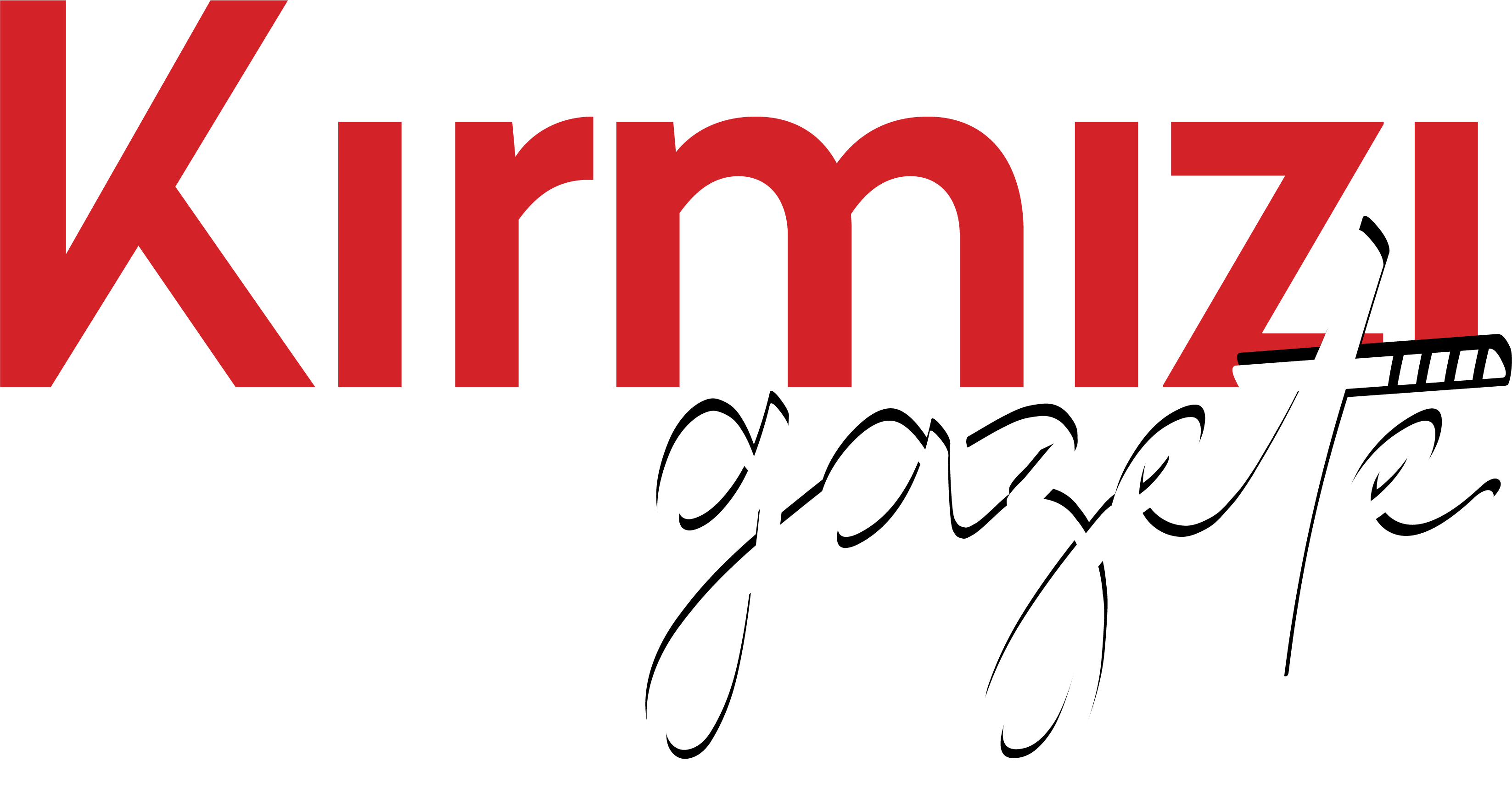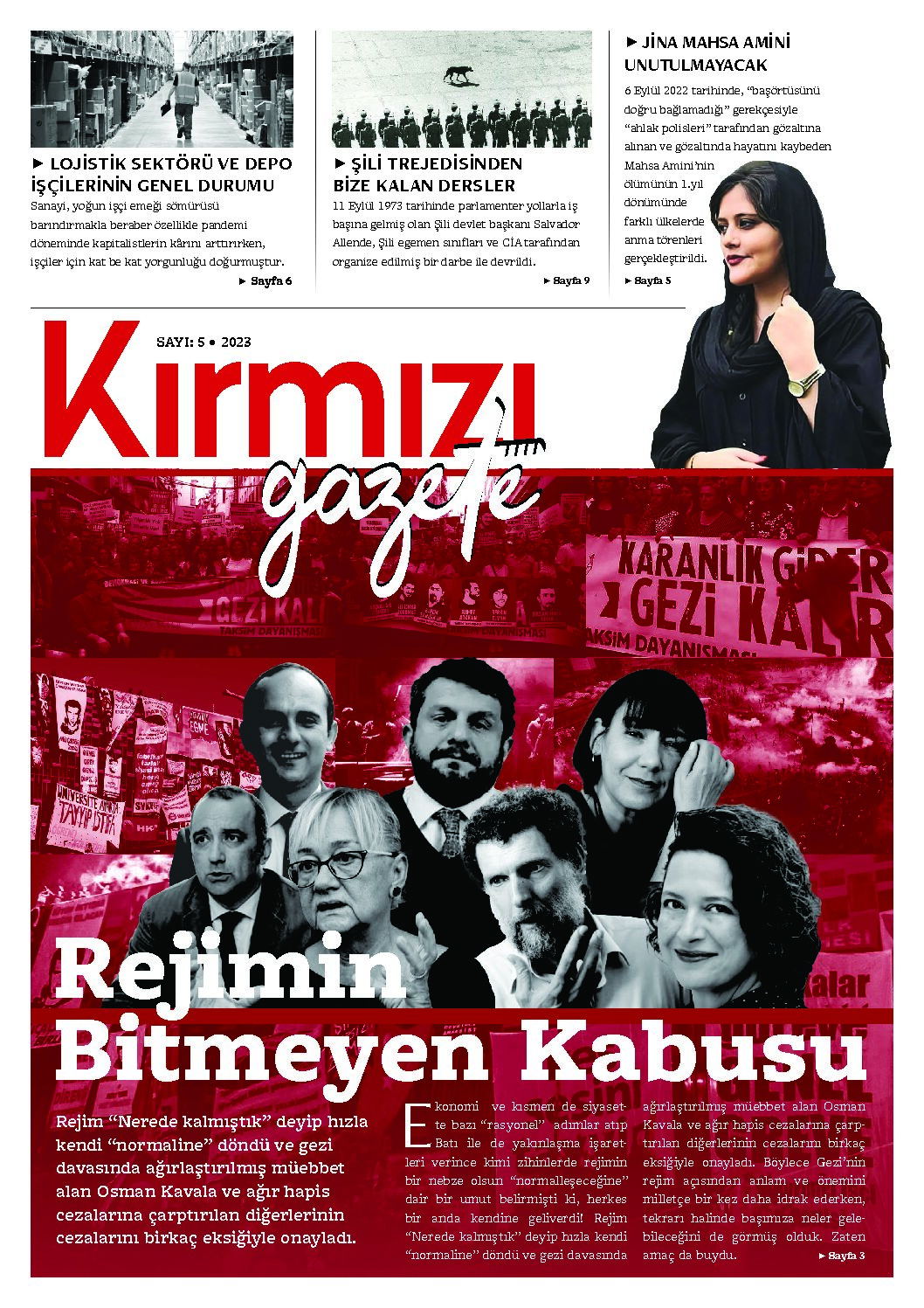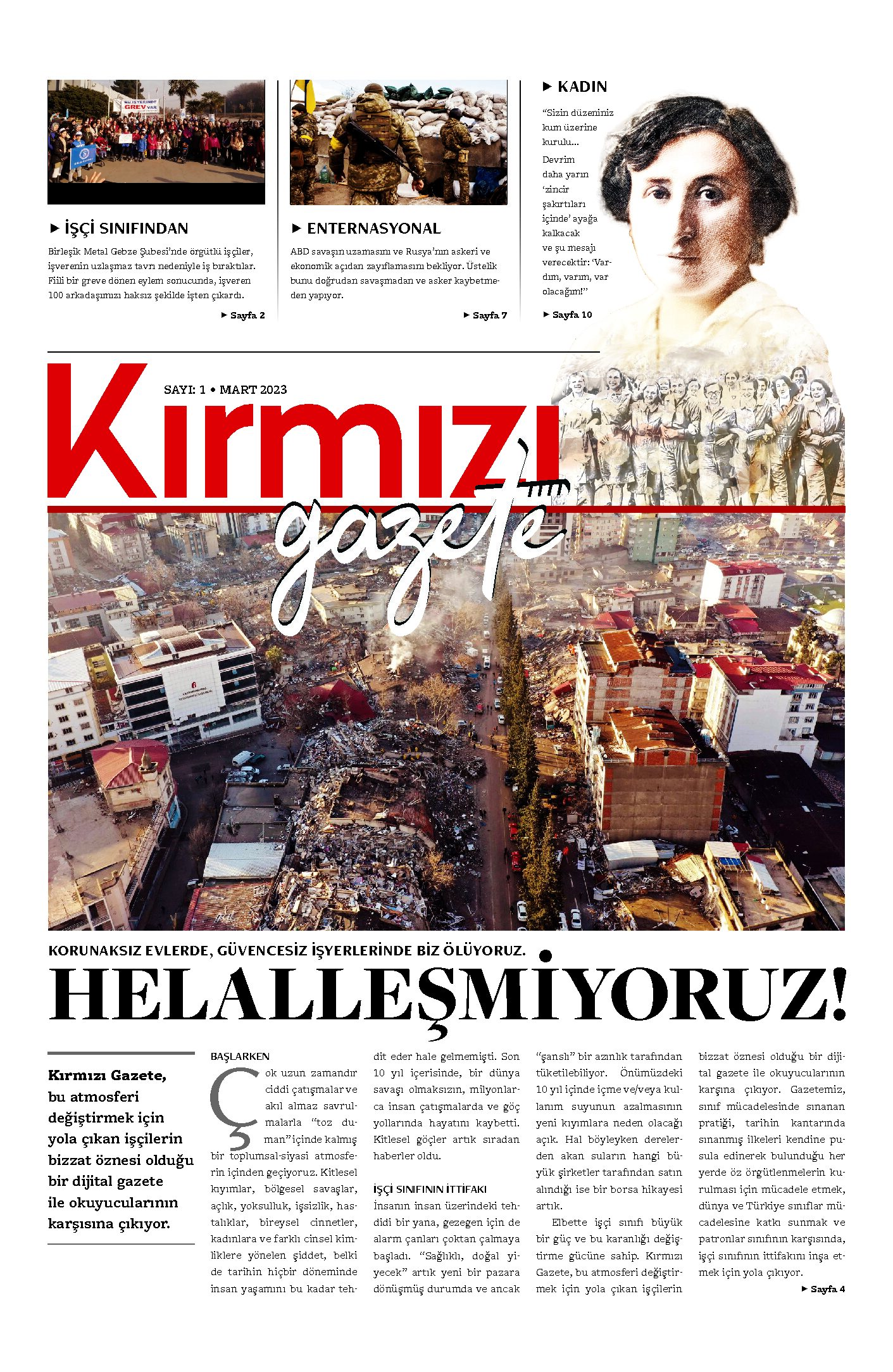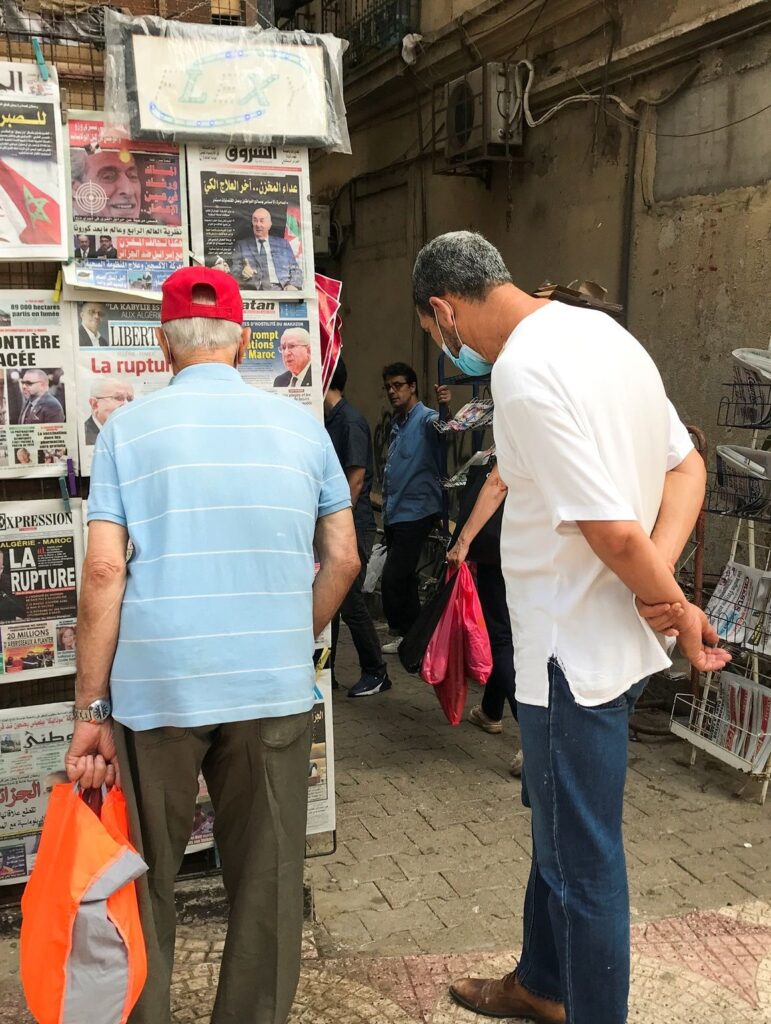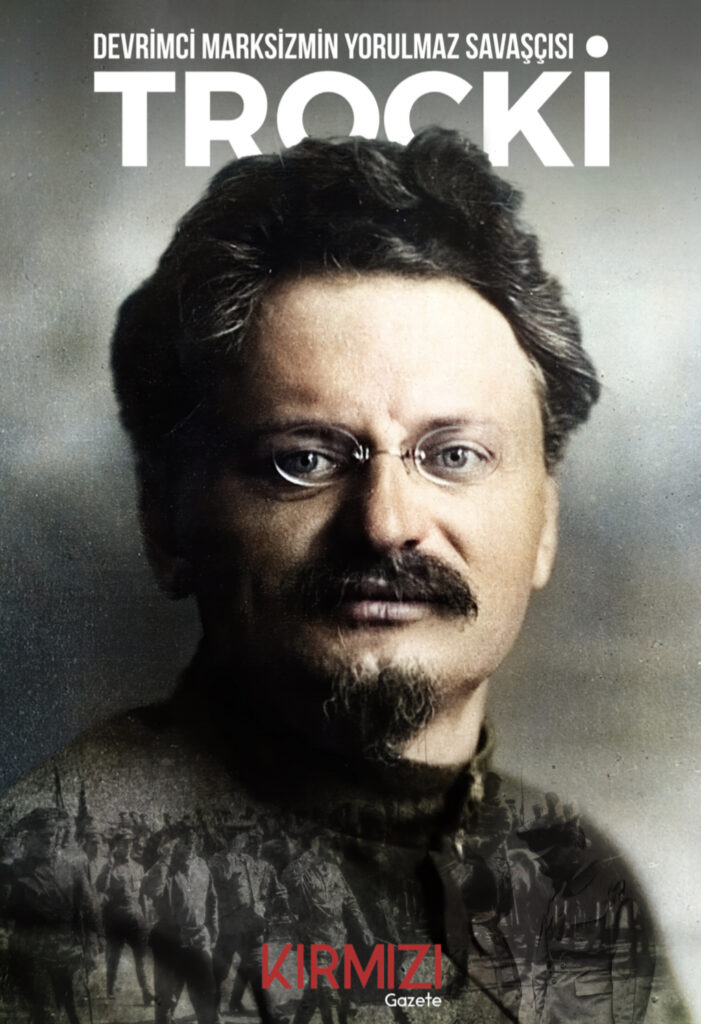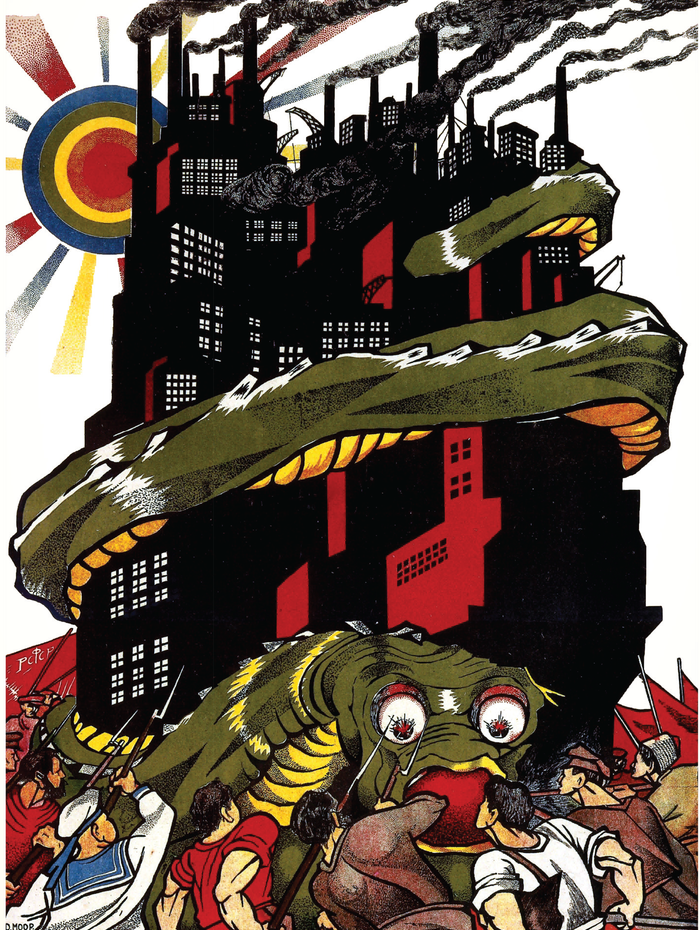June 15, 2019
The Syrian problem was experienced as a problem in the left circles, with some exceptions, apparently, everyone was concerned, but in reality, no one was concerned! So it was forgotten with the calm down of the events! The problem is often tried to be explained with an understanding of “anti-imperialism”, which is based only on the “geo-political” basis and has no class direction. This was also a close-knit approach with the evaluation of the “North African and Middle Eastern Arab Revolutions”, which became popular under the name “Arab Spring.”
Part of the socialist left considered the wave of revolutionary popular movements that erupted spontaneously against the rotting bourgeois dictatorships in 2011 as “a game of imperialism”, “plan to redesign the region”, “as part of the Greater Middle East Project”. This section, “interestingly”, could not understand the changes in the historical process, the point of their arrival.
Another political party, first rightly described it as a revolution, however, as we will point out in the article below, they continued to grasp it as an almost “infinite revolution” despite its ending or turning into a “counter-revolution”, or “stolen
revolution” (Syria, Libya…).
We opposed those who did not call a real and huge revolution as a “revolution,” but also opposed those who said that a “revolution” that had ended or turned into a counter-revolution continued. Starting from the first day of the revolutionary popular movements that started in Tunisia and Egypt, we considered freedom struggles as a revolution. We compared them to the “Revolutions of 1848”. However, we have also opposed this “endless” or “endless revolution” approach in a period when “revolution-counter-revolution dialectic” and imperialist interventionism are in a prominent manner. We entered into open and written discussions with these views.
Throughout the whole process, we tried to grasp and evaluate the problem in the context of the social liberation of Arab and Syrian workers, not primarily as a “diplomat” but as a “revolutionary”, not solely through “geo-political”. This article we published was written for the purpose of evaluating the point reached in Syria in 2017. For some reason, we have made some minor changes to the article that are not related to the merits.
What Happened In Syria? (19 January 2017)
The Syrian revolution, which started as a part of the Middle East-Arab revolutionary wave in 2011, was defeated by the vital leadership problem, as well as foreign interventions that resulted in the withdrawal of the revolutionary wave across the region and the strengthening of the jihadist Salafist currents. In the defeat of the revolutionary popular movement in Syria, an “international counterrevolution front” formed by rival external and internal forces in conflict with each other played an important role. The revolution was first “stolen” and then liquidated by the “opposition” wing of this front (imperialism, some regional countries, internal reaction, outsider jihadists, etc.). (Let us repeat, the problem was not limited to foreign intervention, and still not. The social-class, political causes, and objective boundaries that play a role in the withdrawal and defeat of the revolution must also be considered as a problem in itself.)
The “International counter-revolution front” that we talk about can be described as follows:
Although this front seems to be uncompromising or even clashing, at least objectively it forms a chain with common interests in the liquidation of the Syrian revolution. From the US to China, the EU, Russia and Iran, the al-Qaeda Jihadis, Hezbollah in Lebanon, Turkey, Saudi Arabia, Qatar, and so on. This is a front with “external powers”. In addition, internal forces such as the bourgeois “Syrian Opposition” (claiming that it can bring democracy and freedom to Syria by pushing its back against the West and regional backwardness), the famous Muslim Brotherhood, and of course the Syrian state (including some high-level rulers who abandoned the regime)…
Their aim is clear: to grab the most “scenic” places of the region on the backs of Syrian poor workers! At best, aiming to turn a neoliberal soldier-police regime, a loot and bribery dynasty regime into a neoliberal false democracy.
However, when looking at the Syrian projects of the Salafist-jihadist groups, which almost took over the leadership of the opposition, it was seen that even the above political goals remain “innocent”!
Intentions …
Let’s immediately ask the question here: Could this “international counterrevolution front” have “revolutionary” intentions on Syria? Of course, it could not be. The aim of the intervention of the part of the counterrevolutionary front that supports the opposition was to “extinguish” the Syrian revolution as “an independent, democratic and libertarian working people movement” and to change the Assad regime by the leadership of its own supporters. Only in this way, they could stop the anti-regime revolutionary popular movement in Syria, to reach the dimensions that threaten bourgeois property and affect other countries of the region, their reactionary regimes.
The fragmentation of the “Shia” front formed by the Syrian regime, together with Iran, against the USA and its allies, under conditions where the US hegemony in the region declines. (See: Iran-Saudi power struggle). Especially the regional monarchies such as Saudi Arabia and Qatar, unlike the USA and the EU, did not even tolerate a completely formal, reactionary, and dependent “bourgeois democracy” that could set a bad example for their regimes. That is why the Saudis supported the military coup that overthrew the Muslim Brotherhood administration in Egypt. Although targets inside Turkey, the Middle East as a whole will connect a “Brotherhood chain” means to establish hegemony in the region … The target of Turkey, via the Muslim “Brotherhood chain” linking the entire Middle East, was to establish a regional hegemony …
Counter-revolutionary tools of the intervention …
The “revolutionary” wing of the “international counterrevolution front” has also created its own means of intervention! The security and defense problem of revolutionary mass actions, which emerged under the influence of the regime’s brutal attacks, has begun to be “solved” by organized Islamic groups. In a short period of time, Syria has become an area where international jihadists, as well as local Islamic-jihadist groups with serious weapons and money resources, started to flow, unlike the working people who demand freedom.
In addition to these Salafi-Islamists, the FSA, initially composed of soldiers who refused to fire civilians and were against the Assad regime, also took its place in the war. However, FSA, which was also used as a roof organization, could not be transformed into a truly central military structure. The competition between Turkey and Saudi Arabia to control the Free Syrian Army had the largest share of this situation. After several leadership changes, with the influence of corruption, the organization dissolved in terms of the central structure. While the Islamist, Salafist-jihadist groups that are under its umbrella or use its name are shifting to other fronts and alliances, the existence of the surviving weak “secular” military structures has also been fully dependent on US-EU support. Turkey was a supporter of the Muslim Brotherhood. Meanwhile, the conflict between the “revolutionary” organizations and bloody liquidations never stopped. An important part of them was to get the biggest share from regional domination and external support beyond “ideological” reasons.
“Friends of Syria”… The political dimension of control…
Foreign intervention and control also had a political dimension. “Friends of Syria” coalition has consisted of the US, Western countries, Turkey, Saudi Arabia, and Qatar. They led the establishment of various coalitions, both to achieve their own regional geopolitical goals and to politically control the popular movement. The Syrian National Council (SNK) was established in Istanbul and the Syrian Opposition and Revolutionary Forces Coalition (SORFC) was established in Doha. The two coalitions were under the control of Turkey and the Saudi-Qatari alliance. Also in the area of competition between them! However, these coalitions could not play an important role due to their ineffectiveness in the field. (Turkey was striving for domination over the Muslim Brotherhood in the organization.)
The changing attitude of the USA: Baathist transition
Meanwhile, the attitude of the USA started to change due to the inability to find a stable, strong, and reliable “moderate” opposition that could have a political effect. The U.S. significantly cut heavy support for the opposition because the weapons it gave to these opponents took over when they changed sides and joined the radical Islamists (sometimes they were selling the guns!); Saudis and Qatar also put under pressure on this issue. The political consequence of this was that the United States adopted the policy of “a transition without Assad but Baath,” although it supports the opposition to the extent that it can hold the opposition. In addition to the consequences of the collapse of the Iraqi state in 2003, the USA was afraid of the possible political-military consequences of the absolute domination of radical Islamists in Syria.
Withdrawal of the popular movement…
As the struggle gradually turned into a bloody and chaotic civil war, as the power and influence of the armed Islamists increased, the popular movement retreated. Many “activists” who took part in the struggle at that time and played roles in various “coordination committees” highlight this. Almost all of them say that their biggest mistake is accepting armed Islamists into the mass movement.
As a matter of fact, due to the interventions of imperialism and regional reaction and the intentions and methods of Islamists (Alevis, Druze, and Christians who took part in the anti-regime mass movements with the aim of a democratic transformation and freedom), they preferred to pursue a passive or reformist opposition. Some of them rested in “Democratic Coordination” consisting of socialist parties and individuals opposing the Assad regime, including the PYD.
Who is where? A revolution left to the mercy of Islamists!
The civil war has caused millions of Syrians to either leave the country or move into the country, and the social fabric is severely dispersed. The vast majority of displaced people migrated to regime-controlled areas for various reasons (to get rid of the regime’s bombings or Islamists’ violence). In the meantime, it is noteworthy that hundreds of thousands of “Sunni” non-Islamists seek refuge in Alevi-majority areas such as Latakia. Another part of the people, who was in the original revolutionary mass movement and did not leave the country, did not move to the regions controlled by the regime but remained in their own areas of rebellion. It can be said that some of them are the Islamists, their sympathetic masses, and the families and relatives of the militants of the jihadist organizations.
Another section consisted of non-Islamic secular communities, some very small socialist and revolutionary groups, and individuals who wanted the collapse of the Assad regime. However, their existence soon became inevitably dependent on the permits and mercy of the Islamists, who had taken over the rule of the regions almost absolutely. As far as we know (except those who migrated to other countries), this unarmed and lacking leadership continued its activities within the local coordination and committees to ensure the survival of the public and provide some daily services.
This section, which is frequently exposed to the terrorism of the Islamists (such as losing the Duma Quartet …), also had to submit to Islamists in order to be protected from the regime forces. Although they were not very strong, they also struggled with armed Islamists who were the rulers of the region. (Various protest actions against the Shariaist pressures, etc.) After all, the resistance of this segment, which advocated the goals of the revolution, remained in the vacuum created by the balance of power between the regime and the armed opposition.
Was it going on?
Nevertheless, can it be said that the “Syrian revolution continues” based on the fact that this group continued its resistance somehow? In the debates we took part in, we also came across some views that these unarmed and free revolutionaries had to join armed and mercenary Islamist organizations under the influence of their material living conditions, and that the resistance has already expressed itself over Islamist organizations.
At the point reached, saying that the “Syrian revolution” (“withdrawal”) continues is irrational: The Syrian revolution was defeated under the intervention of an “international counter-revolution front”. Imperialism, Turkey, and the Gulf monarchies that give money and arms to the Syrian opposition, of course, they did not want the continuation of the Syrian revolution. Salafi-jihadist armed organizations (mostly organized by the secret services), the Muslim Brotherhood, a political-military coalition that is tightly controlled by Turkey, and some small secular groups still supported by the US-EU have been stealing the Syrian revolution …! Revolutionaries who cannot find weapons and money struggle under the roof and leadership of counter-revolutionary Islamic organizations because they cannot build their own leadership and organizations.!
What kind of regime ..?
In this section, let us talk briefly about the organizations that have taken the lead in the anti-regime movement in Syria, if they overthrow the Assad government, what kind of Syria they target. For example, the Syrian Islamic Front, established by radical-Salafist Islamists as a roof organization, defines itself as follows: “It is an independent political, military, social, aiming to demolish the Assad regime and establish an Islamic state where domination alone is the supreme God in terms of regulating the savings of the individual and the state. front.”
It should not be forgotten that this program is the program of these Salafi-jihadist Conquest Army that have held Aleppo and Idlib. Anyone who does short research on the identity, role, and views of the Saudi cleric Abdullah al-Muheysini, who is the head of the Conquest Army and the “sharia court” in Aleppo, can understand what the ruling regime in Idlib and Aleppo is like.
The “program” we cited above is probably the program of all Islamic structures, albeit with slight differences. However, unlike ISIS and Al-Qaeda Nusra, it is known that some of them, which advocate a more domestic and national jihad, proposed a “progressive” transition, which also took into account other internal and external elements after the fall of Assad. This can be called a “progressive counterrevolution!”
FSA; neither lives nor lives ..!
As we finish the episode, let’s talk about “FSA (Free Syria Army) as far as today”. It is now clear that the activity of this organization, which has been discussed many times, whether it is or not, is not evidence of an ongoing “Syrian revolution”. Moreover, this has been so long. Kurdish journalist Barzan Iso, from Rojava, described the FSA in 2012 as follows:
“… FSA is mentioned as if it were an organization. However, there is no organization called Free Syrian Army; a gang or a thief says, “I am the Free Syrian Army” when he takes the gun in his hand… Of course, there are big brigades affiliated with FSA. Some of them have warm relations with the Kurds. Some armed groups in some places connected to the Democratic Coordination YPG (People’s Defense Forces)… In addition, when a clash occurred between YPG and FSA, some FSA brigades did not want to conflict with the YPG and these troops withdrew from the Kurdish region… Indeed, there are groups that conflict with each other in the FSA, there are looters, and there are those who ally with the Kurds. A multi-part tragicomic atmosphere prevails here. ”
Today “FSA”, has turned into a pathetic pawn of Turkey’s operations in the occupied part of Syria.
